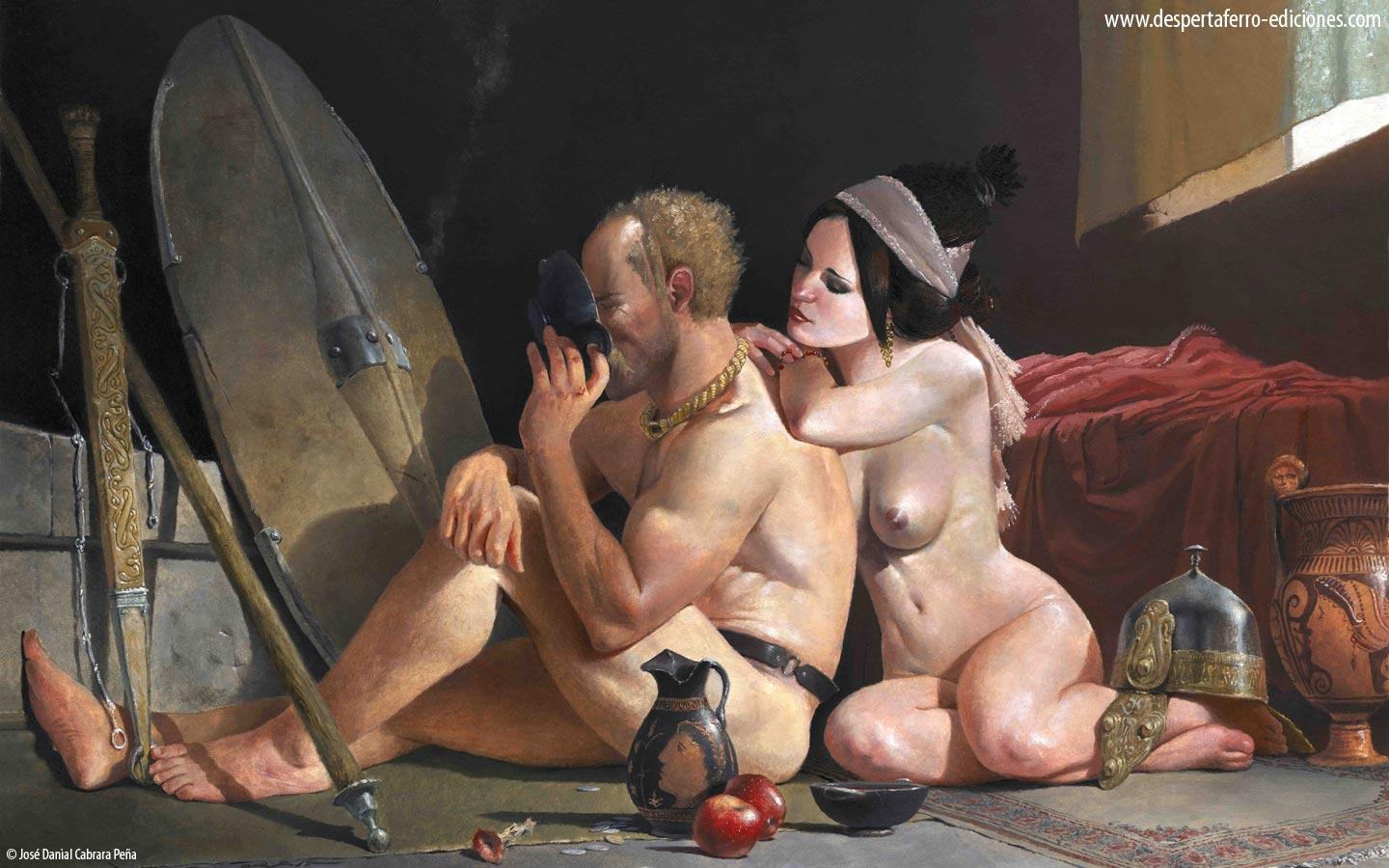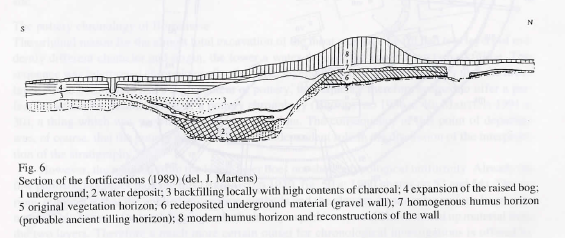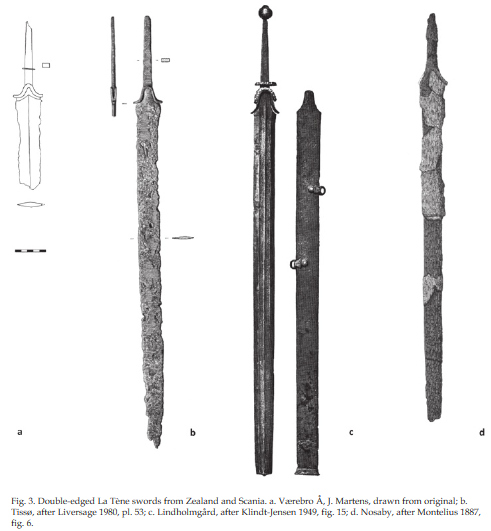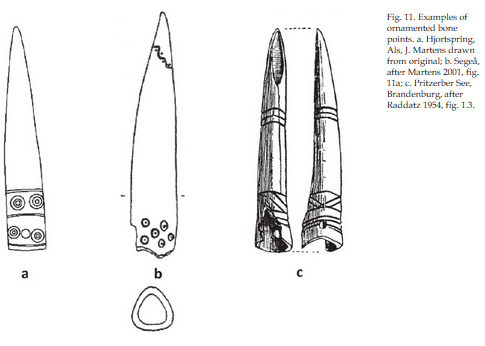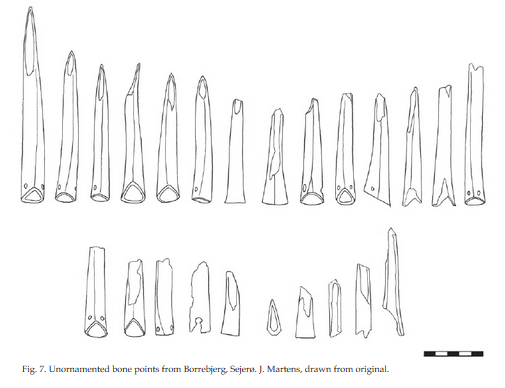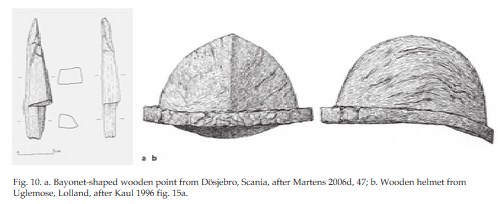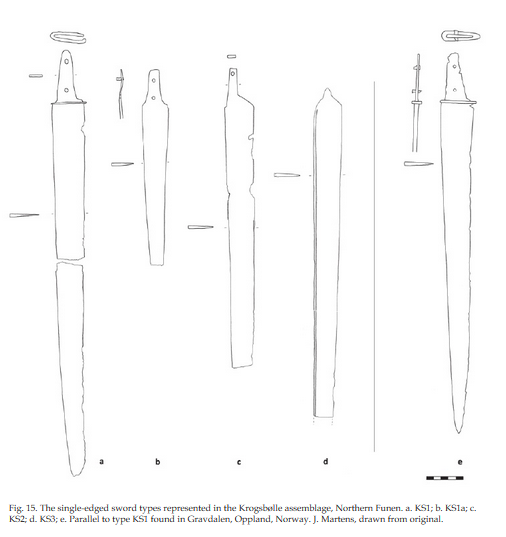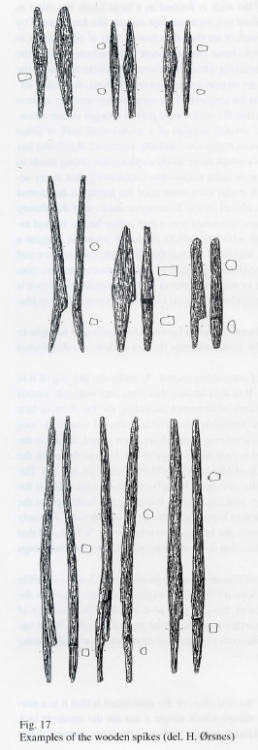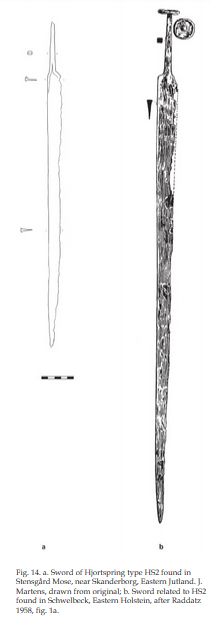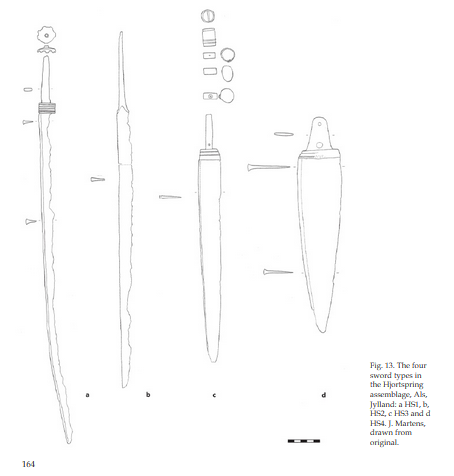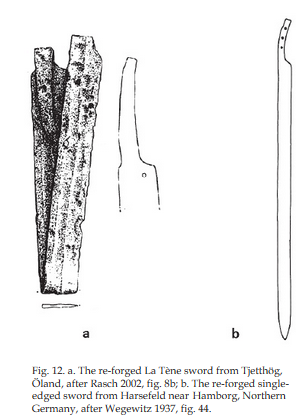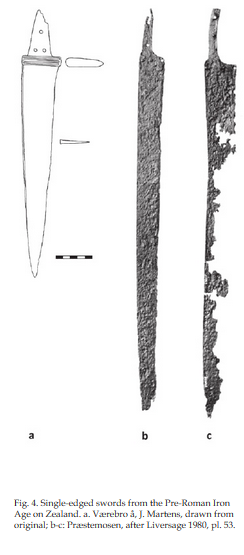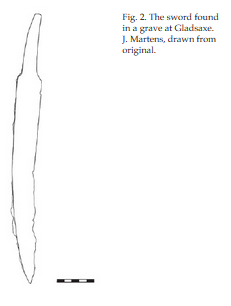-
Posts
2.379 -
Joined
-
Last visited
-
Days Won
80
Everything posted by Genava55
-
.thumb.jpg.b21ca1d0c15fb56b42c39b25a0a40815.jpg)
Exploit found: seeing enemy stats while paused
Genava55 replied to Yekaterina's topic in Bug reports
I doubt it -
.thumb.jpg.b21ca1d0c15fb56b42c39b25a0a40815.jpg)
===[TASK]=== Crowd Sourced - Thracians (Faction)
Genava55 replied to Cleo's topic in Game Modification
Thracian tomb of Aleksandrovo Thracian tomb of Cotys I Thracian tomb Golyama Arsenalka Thracian tomb Griffins Thracian tomb Helvetia Thracian Tomb of Kazanlak Thracian tomb Ostrusha Thracian tomb of Seuthes III Thracian tomb Shushmanets Thracian Tomb of Sveshtari It would be nice to have a Thracian tumulus tomb as a special building. It wouldn't be difficult to make. This is basically an earth tumulus with a few structures around. The easiest is to do a monumental gate with a greek column at the entrance and an outer wall. https://en.wikipedia.org/wiki/Thracian_tomb_Shushmanets#/media/File:Shushmanets3.jpg https://360image.net/product/thracian-tomb-shushmanets-bulgaria-3-5/ (Thracian tomb from Starosel) The conception of a Thracian tomb is very similar to Macedonian ones. Therefore, if it is too difficult to understand how a Thracian tomb works without an illustration, I suggest to check how the Macedonian ones were since they are more popular and more covered by the medias. https://en.wikipedia.org/wiki/Vergina#/media/File:Makieta_grobowca_Filipa.jpg https://en.wikipedia.org/wiki/Vergina#/media/File:Facade_of_Philip_II_tomb_Vergina_Greece.jpg http://www.amfipolis.com/amphipolis-tomb/ http://www.amfipolis.com/wp-content/uploads/2014/09/amphipolis-tomb1.jpg -
.thumb.jpg.b21ca1d0c15fb56b42c39b25a0a40815.jpg)
===[TASK]=== Crowd Sourced - Thracians (Faction)
Genava55 replied to Cleo's topic in Game Modification
A few interesting references: The Valley of the Kings? Social Complexity of Inland Thrace during the First Millennium BC. https://www.researchgate.net/publication/295262199_The_Valley_of_the_Kings_Social_Complexity_of_Inland_Thrace_during_the_First_Millennium_BC Urbanization - In: Julia Valeva, Denver Graninger, and Emil Nankov (eds.) A Companion to Ancient Thrace. https://www.academia.edu/6793751/Urbanization_in_J_Valeva_E_Nankov_and_D_Graninger_eds_A_Companion_to_Ancient_Thrace_Wiley_Blackwell_2015_399_411 The first Thracian urban and rural dwellings, and stonecutting techniques. https://www.talanta.nl/wp-content/uploads/2015/02/TAL-32-33-2000-2001-022-artikel-tot-pg-253.pdf Kozi Gramadi. Studies of an Odrysian ruler's residence and sanctuaries in Sredna Gora Mt. (8th—1st centuries BC). https://www.academia.edu/4935133/KOZI_GRAMADI_STUDIES_OF_AN_ODRYSIAN_RULER_S_RESIDENCE_AND_SANCTUARIES_IN_SREDNA_GORA_MT_8TH_1ST_CENTURIES_BC The Fortifications of The Early Hellenistic Thracian City of Seuthopolis. https://www.academia.edu/424819/THE_FORTIFICATIONS_OF_THE_EARLY_HELLENISTIC_THRACIAN_CITY_OF_SEUTHOPOLIS_BREAKING_THE_MOLD Sboryanovo. Volume III: The Thracian City - City planning. Fortification system. Architecture. https://www.academia.edu/43425810/THE_THRACIAN_CITY_CITY_PLANNING_FORTIFICATION_SYSTEM_ARCHITECTURE_Sboryanovo_VOLUME_III_2015_ The Tumulus of Golyamata Mogila near the villages of Malomirovo and Zlatinitsa. https://www.academia.edu/12392747/The_Tumulus_of_Golyamata_Mogila_near_the_villages_of_Malomirovo_and_Zlatinitsa_Chapter_I + https://www.academia.edu/12392810/The_Tumulus_of_Golyamata_Mogila_near_the_villages_of_Malomirovo_and_Zlatinitsa_Chapter_II_III + https://www.academia.edu/12392889/The_Tumulus_of_Golyamata_Mogila_near_the_villages_of_Malomirovo_and_Zlatinitsa_Chapter_III_IV Lysimachus, the Getae, and archaeology. https://www.jstor.org/stable/1558897 L’épopée des rois thraces, des guerres médiques aux invasions celtes (479-278 av. J.-C.). Découvertes archéologiques en Bulgarie. [a lot of pictures!] https://www.academia.edu/11989784/L_épopée_des_rois_thraces_des_guerres_médiques_aux_invasions_celtes_479_278_av_J_C_Découvertes_archéologiques_en_Bulgarie Odrysian arms, equipment, and tactics. https://www.academia.edu/738235/Odyrsian_arms_equipment_and_tactics Warfare. - In: Julia Valeva, Denver Graninger, and Emil Nankov (eds.) A Companion to Ancient Thrace. https://www.academia.edu/21657079/Stoyanov_Totko_Warfare_In_Julia_Valeva_Denver_Graninger_and_Emil_Nankov_eds_A_Companion_to_Ancient_Thrace_Wiley_Blackwell_2015_426_442 The Chalkidian helmets and the origin of the North Thracian ceremonial armour. https://www.academia.edu/21902640/L_Ognenova_T_Stoyanov_The_Chalkidian_helmets_and_the_origin_of_the_North_Thracian_ceremonial_armour_SAUS_Suppl_4_Stephanos_Arcaeologicos_in_honorem_Professoris_Ludmili_Getov_Sofia_2005_р_519_539 Thracian Warriors in Transylvania at the Beginning of the Late Iron Age. The Grave with Chalcidian helmet from Ocna Sibiului. https://www.academia.edu/2026130/A_Rustoiu_S_Berecki_Thracian_Warriors_in_Transylvania_at_the_Beginning_of_the_Late_Iron_Age_The_Grave_with_Chalcidian_helmet_from_Ocna_Sibiului Archaeological textiles in pre-Roman Thrace: state of the evidence. https://www.researchgate.net/publication/348976061_Archaeological_textiles_in_pre-Roman_Thrace_state_of_the_evidence The greaves from Agighiol (Romania) and Vratsa (Bulgaria) Reconsidered. https://www.academia.edu/39838055/The_greaves_from_Agighiol_Romania_and_Vratsa_Bulgaria_Reconsidered A Bell Cuirass from the Tumulus № II Near the Village of Gorski Izvor. https://www.academia.edu/83166683/Ya_Ivanov_A_Bell_Cuirass_from_the_Tumulus_II_Near_the_Village_of_Gorski_Izvor_Brief_Analysis_of_the_Cuirasses_from_Thrace_Sofia_2022_pdf -
.thumb.jpg.b21ca1d0c15fb56b42c39b25a0a40815.jpg)
Other strategy games not RTS.
Genava55 replied to Lion.Kanzen's topic in Introductions & Off-Topic Discussion
-
Thanks. If I am asking you a few questions, this is simply to understand what's going on in a longer term perspective. I also think it's worth remembering that the Germans have a long and turbulent history. --------------- They appeared in history with the Cimbri and the Bastarnae during the second century BC, for the first they were a migration of a vast population in search of a new territory which involved other peoples and chiefs in its wake, probably in a way quite similar to the Celtic migrations into Italy and Greece. The latter were probably a conglomeration of populations, also on the run, but who settled fairly quickly in Moldavia and near the Danube Delta. A little later in the 1st century BC, it was the Germans of the Elbe region who united under a powerful leader and began to take control of different territories. This leads to upheavals in neighboring regions. The Sequani seek the aid of the Suebi against the Aedui supported by Rome. We see peoples like the Ubians, the Tencteri and the Usipetes confront each other and try to migrate to Gaul. The Helvetii attempted the same approach in order to avoid upheaval and looting. This first period is therefore characterized by different migration attempts on the part of the Germans. The Cimbri failed for different reasons. They had some success, notably by plundering Illyria, the Noric kingdom and Transalpine Gaul under Roman control. However, they are repulsed by the Scordisci, by the Boians, by the Belgians and by the Celtiberians. Even when they defeat the Norici, they do not settle there. On the contrary, each victory excites them and encourages them to continue. During their plunder, they attracted the lust of other peoples and this is probably how the Teutones, Ambrones, Tigurini (Helvetians), Toygeni (Helvetians) and Volcae Tectosages end up joining them. The first successes against the Romans are annihilated by the defeats that Marius inflicts on them. Concerning Ariovistus, he succeeded in installing part of his population, the Harudes, on the territory of the Sequani. The rest of the Suevi coalition settled near the Rhine, including the Triboci, the Nemetes, the Vangions and the Marcomanni. These took territories from the Celts, probably shortly before the Gallic Wars. However Ariovistus is defeated by Caesar and the Harudes were expelled. The success of this migration is partial, but it foreshadows the geopolitical context to come. The Germanic populations monopolized a territory between the Rhine and the Elbe, which will become a part of Germania. The only people who had a total success are the Bastarnae who permanently occupied the territory located in Moldavia. They lived here for over 500 years. In a second time, the Germanic migrations calm down. At least, they no longer concern the Greco-Roman world. The Germans have a complicated relationship with their Roman neighbors, they very often receive diplomatic gifts intended to calm their ambition, they regularly serve the armies of Rome and most clashes with the Romans are mainly on the territory of the Germans and are defensive wars (for them). The Germanic world was mainly turned in on itself at that time. During this period, the Suevi (and other Elbe Germans) played a minor role in history. They underwent the campaign of Drusus and it is probable that the Suevi and the Marcomanni left the region near the Rhine following this campaign. From that moment on, the Suevi are either allies or client kingdoms of the Romans. It was other peoples who faced Rome, notably the Cherusci, Bructeri, Marsi, Sicambri, Chauci, Chatti and Batavi. Eventually the Elbe Germans again became an interest only with the Marcomannic Wars (AD 166–180). During the period of migrations, the most active Germanic peoples are the Goths and by far. They are the most powerful and successful people. Then come the Franks and the Alamanni. The former are Germans from the Rhine, the latter are Germans from the Elbe. The Franks and Alamanni tried to plunder the Roman Empire several times and to settle there during the 3rd and 4th centuries, but they were successful only during the beginning of the 5th century. There are also the Saxons, known for their invasion of Britannia, but most of their interesting history happened after the 5th century, so they are probably not considered for Empires Besieged. The Vandals can be considered as close to the Goths, as they are Eastern Germans too, nonetheless they are a powerful and successful people during the 5th century. --------------- So it should be considered there are other Germanic people famous and probably future candidates. I have no doubt that the Goths will be considered, this is already the case in DE. Cimbri, Suebi and Goths... this is already 3 civs. It is a problem quite similar to the Greek city-states and to the Hellenistic kingdoms. If you start looking, there are interesting candidates (Syracuse, Thebes, Corinth, Pergamon, Bithynia, Pontus, Bosphorus, Bactria etc.)
-
So if I understand your message correctly, the Cimbri won't be a part of the main game (Empires Ascendant), only a civ for a mod. Right? Edit: so it is better to keep the changes to the minimum from the original Suebi El famoso sequel... in the end it won't be a different game but an extension of the current Empires Ascendant right? So all the factions from Empires Besieged would be available alongside those from Empires Ascendant, right?
-
Then why this thread? Why all this debate about the Cimbri? Is this what you want?
-
Then could you explain to me this :
-
Although I don't understand why we are talking about including a German faction in 0 A.D. vanilla, it is very sudden. Scythians, Xiongnu, Lusitanians, Thracians, Cimbri, Maya, Zapotecs... is there some kind of euphoria spreading in the forum or just immaturity?
-
.thumb.jpg.b21ca1d0c15fb56b42c39b25a0a40815.jpg)
===[TASK]=== Crowd Sourced - Thracians (Faction)
Genava55 replied to Cleo's topic in Game Modification
-
.thumb.jpg.b21ca1d0c15fb56b42c39b25a0a40815.jpg)
Civ: Germans (Cimbri, Suebians, Goths)
Genava55 replied to wowgetoffyourcellphone's topic in Delenda Est
I think yes. The only thing bothering is the circular iron shield boss. This is something that appeared among the Przeworsk culture in modern day Poland, not in Denmark... At least until the Roman era. I don't know if we should restrict the evidences to material found in Jutland or not. -
Borremose "fortress" Iron age Jutland village of Hodde Celtic weapons: Bones weapons: Wooden weapons: One-edged swords: Celtic like spearheads: Battle-scene:
-
For the symbol, I would suggest a solar wheel. We can use a reference from the late bronze age since there is no record of native art: https://media.lex.dk/media/17783/standard_helleristninger.jpg For the heroes, Boiorix is the best candidate, we have some info about thim. Lugios, Claodicos and Caesorix are barely mentionned in the source. According to the ancient sources, Boiorix seems to have had a certain preponderance on the other mentioned Cimbres leaders. Thus, in 105 BC, it is at the head of the Cimbres that he crushed the army of the legate Marcus Aurelius Scaurus in Transalpine Gaul. Livy described him as a young man full of pride and arrogance. According to this same author, Boiorix made prisoner the legate Marcus Aurelius Scaurus. While the latter tried to divert the Cimbres from Italy, the young leader had him tortured (Periochae, LXVII). His name was not mentioned on this occasion, but everything leads to think that he took part in the battle of Arausio (October 6, 105 BC), then during the later expeditions. Boiorix was again mentioned in July 101 BC. when he came himself to challenge the consul Caius Marius. Both agreed that the confrontation of the two armies took place at the level of the Raudian Fields, near Vercellae (Verceil, province of Verceil, Italy) (Plutarch, Parallel Lives of the Illustrious Men: Life of Marius, 26). It was during this battle, the battle of Vercellae (July 30, 101 BC), that Boiorix died, while fighting in the front rank (Florus, Abridged Roman History, III, 4; Orosius, Histories against the pagans, V, 16, 20). Lugios died in the same conditions, whereas Claodicos and Caesorix were taken alive (Histories against the pagans, V, 16, 20). Florus, Abridgment of Roman History, III, 4: "Their king Boiorix fought bravely in the front rank and made his death pay dearly." Orosius, Histories Against the Pagans, V, 16, 20: "Among these many forms of miserable death, it is reported that two chiefs rushed at each other with naked swords. The kings Lugius and Boiorix fell on the battlefield; Claodicus and Caesorix were captured." Plutarch, Parallel Lives of Illustrious Men: Life of Marius, 26: "Boiorix, king of the Cimbres, at the head of a small detachment of cavalry, having approached the camp of Marius, provoked this general to fix the day and the place of the combat, to decide who would remain master of the country. Marius answered him that the Romans never took council of their enemies to fight; that however he wanted to satisfy the Cimbres on what they asked. They therefore agreed that the battle would be given in three days, and on the plain of Vercellae, a convenient place for the Romans to deploy their cavalry, and for the Barbarians to extend their numerous army." Livy, Roman History (Periochae), LXVII: "Mr. Aurelius Scaurus, lieutenant of the consul, is defeated by the Cimbres and falls himself in their power. Called by them in council, he tries to make them give up the project of crossing the Alps and penetrating into Italy, by telling them that the Romans cannot be defeated. He is killed by king Boiorix, a young man filled with pride and arrogance." ----------------------------------------------------------------------- Teutobad is not very well known and there is a legend he was a giant: Florus, Epitome of Roman History, 1.38 - ca. 150 CE : The War with the Cimbri, Teutones and Tigurini The Cimbri, Teutones and Tigurini, fugitives from the extreme parts of Gaul, since the Ocean had inundated their territories, began to seek new settlement throughout the world, 2 and excluded from Gaul and Spain, descended into Italy and sent representatives to the camp of Silanus and thence to the senate asking that "the people of Mars should give them some land by way of pay and use their hands and weapons for any purpose it wished." 3 But what land could the Roman people give them when they were on eve of a struggle amongst themselves about agrarian legislation? Thus repulsed they began to seek by force of arms what they had failed to obtain by entreaties. 4 Silanus could not withstand the first attack of the barbarians, nor Manilius the second, nor Caepio the third; they were all routed and the camps captured. 5 There would have been an end of Rome if that age had not had the good fortune to possess Marius. Even he did not dare to meet the enemy immediately, but kept his soldiers in camp until the irresistible fury and rage, which in barbarians takes the place of courage, spent itself. 6 The barbarians, therefore, made off, jeering at our men and — such was their confidence that they would capture Rome — advising them to give them any messages which they had for their wives. With a speed which amply fulfilled their threats, they bore down towards the Alps, which form the barriers of Italy, in three detachments. 7 Marius with wonderful celerity immediately, by taking shorter routes, outstripped the enemy, and coming upon the Teutones first at the very foot of the Alps, what a defeat he inflicted upon them, ye heavenly powers, at the place called Aquae Sextiae! 8 The enemy held the valley and the river flowing through it, while our men had no water-supply. It is uncertain whether the general acted designedly or whether he converted a mistake into a stratagem; at any rate the valour of the Romans under the constraint of necessity gave them victory. 9 For when the men demanded water, Marius replied, "If you are men, there it is yonder for you." With such ardour, then, did they fight and such was the slaughter of the enemy that the victorious Romans drank as much barbarian gore as water from the blood-stained stream. 10 Their king, Teutobodus himself, who had been accustomed to vault over four or even six horses, could scarcely find one to mount when he fled, and having been captured in a neighbouring forest was a striking figure in the triumphal procession; for, being a man of extraordinary stature, he towered above the trophies of his defeat. Eutropius, Abridgment of Roman History, 5.1 - ca. 369 CE While the war was going on in Numidia against Jugurtha, the Roman consuls, Marcus Manlius and Quintus Caepio, were defeated by the Cimbri, Teutones, Tigurini, and Ambrones, nations of Germany and Gaul, near the river Rhone; and, being reduced by a terrible slaughter, lost their very camp, as well as the greater part of their army. Great was the consternation at Rome, such as was scarcely experienced during the Punic wars in the time of Hannibal, from dread that the Gauls might again march to the city. Marius, in consequence, after his victory over Jugurtha, was created consul the second time, and the war against the Cimbri and Teutones was committed to his management. The consulship was also conferred on him a third and fourth time, in consequence of the war with the Cimbri being protracted; but in his fourth consulship he had for his colleague Quintus Lutatius Catulus. He came to battle, accordingly, with the Cimbri, and in two engagements killed two hundred thousand of the enemy, and took eighty thousand prisoners, with their general Teutobodus; for which service he was elected consul a fifth time during his absence. Orosius: Marius, now consul for the fourth time {102 B.C.}, pitched his camp near the confluence of the Isara and Rhone rivers. The Teutones, Cimbri, Tigurini, and Ambrones fought continuously for three days in the neighbourhood of the Roman camp, trying by every means to dislodge the Romans from their ramparts and drive them out on level ground. They then resolved to invade Italy in three armies. 10 After the departure of the enemy, Marius also moved his camp and occupied the hill overlooking the river and the plain where the enemy had spread themselves. When his army lacked drinking water, complaints arose on all sides against him; he answered that there was certainly water in plain sight but that it would have to be claimed by the sword. The camp servants, shouting loudly, were the first to rush into the fray; then the army immediately followed. Lines of battle were quickly formed for regular combat. An engagement was fought in which the Romans were victorious. 11 On the fourth day both sides again drew up lines of battle upon the field. The struggle raged on almost equal terms until midday. Under the burning rays of the sun, the flabby bodies of the Gauls melted like snow, and a massacre rather than a battle continued into the night. 12 Two hundred thousand of the Gallic soldiers, according to report, were slain in that battle, eighty thousand were captured, and barely three thousand fled. Their general Teutobodus was killed.
-
-
The Suebi, Semnones, etc. are generally thought as being related to the Jastorf culture. The Jastorf culture is mostly known for its incineration burials. It started during the 7th century BC, so it is old enough. The only issue is that they didn't put weapons in their burials until mid 1st century BC, probably due to the influence of the nearby Przeworsk culture. The first known figure of the Suebi is Ariovistus... and that's all for the campaign of Caesar. So they are basically ruled out just because of that. The Lugians or Vandals are generally associated to the Przeworsk culture, starting around 200 BC. Contrary to the Jastorf culture, they buried their people and they put weapons with them. It seems to have been a very martial society. Big issue although, they have mostly none known figures. Finally we have the Cimbri, Teutones and Ambrones. There are some finds from Denmark that could be useful. The Cimbri had Boiorix for king, the Teutones and Ambrones had Teutobad. Two chieftains of the Cimbri are also mentionned Claodicus and Caesorix. So I think the only candidate are the Cimbri, just to have enough historical figures.
-
.thumb.jpg.b21ca1d0c15fb56b42c39b25a0a40815.jpg)
Inclusion of American civs in 0AD (pre-Columbian)
Genava55 replied to Genava55's topic in General Discussion
Etruscans would be nice. -
https://en.m.wikipedia.org/wiki/Ten_Thousand https://discoveringancienthistory.wordpress.com/2017/04/06/fighting-for-the-enemy-greek-mercenaries-in-persian-service/
-
-
.thumb.jpg.b21ca1d0c15fb56b42c39b25a0a40815.jpg)
Inclusion of American civs in 0AD (pre-Columbian)
Genava55 replied to Genava55's topic in General Discussion
I work with mods for other games. Mostly Total War and Bannerlord M&B. -
.thumb.jpg.b21ca1d0c15fb56b42c39b25a0a40815.jpg)
Inclusion of American civs in 0AD (pre-Columbian)
Genava55 replied to Genava55's topic in General Discussion
I think it was motivated mostly by the amount of work, the necessity to reach a good level of quality for each civ and the difficulty to balance the civs. Splitting the workload is not a bad idea, but putting a strict limit was not a smart way to deal with the workload. Edit: btw there is less people working on 3d models and textures here than in any mods I work with. -
.thumb.jpg.b21ca1d0c15fb56b42c39b25a0a40815.jpg)
Civ: Germans (Cimbri, Suebians, Goths)
Genava55 replied to wowgetoffyourcellphone's topic in Delenda Est
Multiple structures could be a great idea. You could have a small sanctuary with a wooden statue, a sanctuary with a semi-natural groove, a sanctuary on water or on a marsh, a sanctuary with a tree and weapon offerings. You can also have an assembly place etc. etc. A sanctuary like the statue could provide an area bonus ideal for defense. A sanctuary in a groove should bring a general bonus but it should be defended while being far from the civic center. You can put condition on some sanctuaries, like being far from the civic center, built on a forest, built on water bodies etc. Going further, the Suebi could have an unique ressource, scrapping weapons from fallen foes, giving them unit bonus instead of experience. And they could have the choice to discharge those weapons in a sanctuary to convert it as a general bonus or to unlock unique tech. But this requires a lot of coding. -
.thumb.jpg.b21ca1d0c15fb56b42c39b25a0a40815.jpg)
Inclusion of American civs in 0AD (pre-Columbian)
Genava55 replied to Genava55's topic in General Discussion
It was split in two. With the idea of an expansion or a second game. I was not involved in this decision, this is very old. -
.thumb.jpg.b21ca1d0c15fb56b42c39b25a0a40815.jpg)
Inclusion of American civs in 0AD (pre-Columbian)
Genava55 replied to Genava55's topic in General Discussion
Do you know the difference between iron, steel and cast iron? https://es.m.wikipedia.org/wiki/Fundición_de_hierro https://es.m.wikipedia.org/wiki/Alto_horno https://es.m.wikipedia.org/wiki/Horno_bajo -
.thumb.jpg.b21ca1d0c15fb56b42c39b25a0a40815.jpg)
Inclusion of American civs in 0AD (pre-Columbian)
Genava55 replied to Genava55's topic in General Discussion
Copper mostly during our timeframe. Bronze appeared later. Foundries? fundiciones? Absolutely not. I don't understand how you could say that. -
.thumb.jpg.b21ca1d0c15fb56b42c39b25a0a40815.jpg)
Inclusion of American civs in 0AD (pre-Columbian)
Genava55 replied to Genava55's topic in General Discussion
I agree, although recently people suggested to remove Boadicea due to that. I am not in favor of removing her but indeed she breaks the limit.

